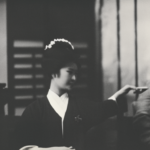The Tang Dynasty: A Golden Age of Chinese Civilization
The Tang Dynasty, which lasted from 618 to 907 CE, is widely regarded as one of the most prosperous and culturally significant periods in Chinese history. Under the rule of the Tang emperors, China experienced a golden age of economic growth, political stability, and artistic achievement.
Economic Prosperity and Trade
During the Tang Dynasty, China’s economy flourished, with agriculture as the backbone of the empire. The government implemented various agricultural reforms, such as land redistribution and irrigation projects, which led to increased productivity and surplus food production. This surplus allowed for the growth of urban centers and the development of a prosperous merchant class.
Trade also played a crucial role in the Tang Dynasty’s economic success. The empire’s central location on the Silk Road facilitated extensive trade with neighboring regions and distant lands. The Silk Road served as a conduit for the exchange of goods, ideas, and cultures, contributing to the cosmopolitan nature of Tang society.
Political Stability and Administrative Reforms
Under the Tang emperors, China experienced a period of relative political stability. The empire was governed by a centralized bureaucracy, with the emperor at the top and a hierarchical system of officials below him. The civil service examination system, introduced during the Sui Dynasty and refined under the Tang, ensured that officials were selected based on merit rather than birthright.
The Tang Dynasty also implemented administrative reforms that aimed to improve governance and enhance the efficiency of the state. These reforms included the equal-field system, which aimed to redistribute land and reduce wealth inequality, and the establishment of granaries to stabilize food prices and ensure a steady food supply.
Cultural and Intellectual Achievements
The Tang Dynasty is renowned for its cultural and intellectual achievements. The flourishing of arts and literature during this period is often referred to as the “Golden Age of Chinese Poetry.” Poets such as Li Bai and Du Fu produced exquisite works that captured the essence of Tang society, nature, and the human condition.
Buddhism also played a significant role in Tang culture. The emperors supported the spread of Buddhism, leading to the construction of magnificent temples and the translation of Buddhist texts into Chinese. Buddhist monks and scholars from India and Central Asia traveled to China, enriching the intellectual and religious landscape of the empire.
Technological Advancements
The Tang Dynasty witnessed remarkable technological advancements that had a profound impact on Chinese society. One of the most notable achievements was the invention of woodblock printing, which revolutionized the dissemination of knowledge and contributed to the growth of literacy.
The Tang Dynasty also made significant progress in the field of astronomy. The government established an astronomical bureau and developed accurate calendars, which were crucial for agricultural planning and religious ceremonies.
Decline and Fall
Despite its many achievements, the Tang Dynasty eventually succumbed to internal and external pressures. The empire faced rebellions, regional uprisings, and military threats from neighboring powers. The An Lushan Rebellion, which lasted from 755 to 763 CE, severely weakened the dynasty and marked the beginning of its decline.
By the late 9th century, the Tang Dynasty was plagued by corruption, financial difficulties, and factionalism within the ruling elite. In 907 CE, the last Tang emperor was forced to abdicate, bringing an end to the dynasty and ushering in a period of political fragmentation known as the Five Dynasties and Ten Kingdoms.
Legacy
Despite its eventual downfall, the Tang Dynasty left a lasting legacy on Chinese civilization. Its political and administrative systems served as models for future dynasties, and its cultural achievements continue to inspire artists, poets, and scholars to this day. The Tang Dynasty’s influence extended beyond China, shaping the cultures of neighboring countries and contributing to the broader development of East Asia.












